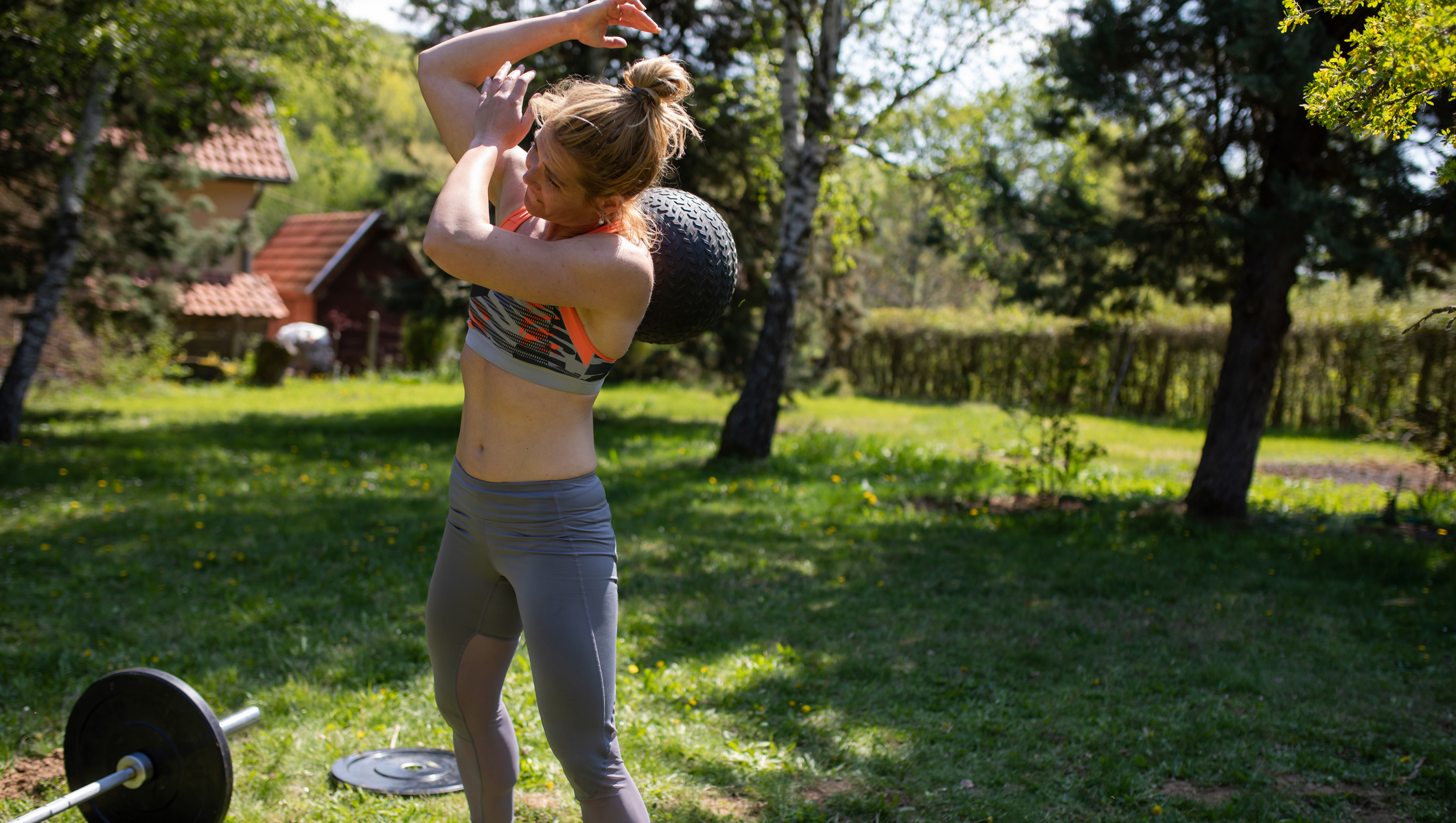Master Hill Running With These Hill Training Workouts
Incline training is tough, but hill sessions improve strength and running economy—if you do them right

If you’re a regular runner looking to improve your speed and endurance you’ll know that it’s essential to mix up the type of training runs you do each week. Sometimes that means short sprint sessions. Sometimes it means getting miles in your legs with a long, easy run. And sometimes, it means hill runs.
If you’re struggling to find the motivation to tackle some hills—either on the treadmill or outside—Myprotein health and fitness expert Faye Reid has shared four benefits of incline training. Then we have three training sessions from Olympian and Runna coach Steph Davis. Finally there are top tips for tackling hill training from Ieuan Thomas, Saucony UK Athlete and British world championship competitor.
Four Benefits Of Hill Running
1. It Burns More Calories
If your number one aim is to burn calories, find your nearest incline. The extra effort involved compared with running on the flat means you’ll be calling on your body’s reserves at a much faster rate, while also strengthening your muscles
“Uphill running utilizes more muscle fibers than flat running and therefore improves strength while burning fat,” says Faye Reid.
2. It Prevents Common Running Injuries
Regular runners place a lot of pressure on their shins and knees, often resulting in persistent niggles in those areas. Running uphill can help you avoid exacerbating those issues.
“Flat and downhill runs will mean that your weight is shifted forward and have more impact on your shins than on the supporting calf muscles, quads, hamstrings and glutes that are used to propel you forward when running uphill,” says Reid.
“The same can be said for your joints—your knees feel more strain on a flat or declining surface than your posterior muscles do.
Get the Coach Newsletter
Sign up for workout ideas, training advice, reviews of the latest gear and more.
“Uphill running is a perfect option for anyone looking to work those rear muscles and avoid excessive strain on your shins and knees.”
3. It Improves Endurance
No flat run feels easier than the first flat run after a hill session, and the overall endurance improvements you make will be clear next time you tackle a long race.
“By regularly running uphill, you’ll find returning to your previous flat runs comparatively easy,” says Reid.
“As the incline requires more effort and puts your muscles fibers to work, in time your overall running stamina and form will improve.”
4. It Increases Speed
Running both up and down hills helps strengthen the muscles in your legs so if you feel the need for speed, incline work can get you there.
“The extra workout to your leg muscles helps increase your running speed,” says Reid. “The same can be said for downhill running, which will build your quads. If it’s a personal best you are training for, add hill running intervals into your routine.”
Hill Training Workouts
Hill sessions are best done at the start of a training block
Steph Davis
“Hill sessions can be tough, but they have benefits and add variety to training,” says Runna coach Steph Davis. “Hill sessions are best done at the start of a training block as they are great for building strength and power, and therefore lay a strong foundation for the more intense workouts to come.”
Here are three hill workouts from Davis to try.
Hill Workout 1: Alternating Hill Reps
In this session you alternate between longer, more sustainable reps and shorter, less sustainable reps.
“This trains the body to adapt to the changes in pace you may experience in a race,” says Davis. “Shorter reps are also great for building strength and power.”
Warm-up: 10-15min, easy pace
Workout: Do 2-8 sets, depending on your running experience, of the following:
- Run uphill for 60sec at 70%-80% effort
- Recover for 60sec while jogging downhill
- Run uphill for 30sec at 80%-90% effort
- Recover for 90-120sec while jogging downhill
Warm-down: 10-15min, easy pace
Hill Workout 2: Drop Set Hill Reps
“This is a great workout for practicing your pacing,” says Davis. “To get the best out of ourselves in the shorter reps at the end, we have to control the effort in the longer reps. We are slightly fatigued going into the shorter reps so we are practicing running on tired legs. This improves our resistance to fatigue and will come in handy for longer races.”
Warm-up: 10-15min, easy pace
Workout Block 1: Do 5-10 reps, depending on your experience, of the following:
- Run uphill for 60sec at 70%-80% effort
- Recover for 60-90sec while jogging back downhill
Workout Block 2: Do 5-10 reps, depending on your experience, of the following:
- Run uphill for 30sec at 80%-90% effort
- Recover for 45-60sec while jogging back downhill
Warm-down: 10-15min, easy pace
Hill Workout 3: Endurance Hill Reps
“This session will improve your strength and power, and also give you a confidence boost for hilly races,” says Davis. “Running uphill forces us into a better running position, and the longer the hill rep the longer we spend in this position. This results in improved running form, which increases efficiency and improves running economy.”
Warm-up: 10-15min, easy pace
Workout: Do 5-15 reps, depending on your experience, of the following:
- Run uphill for 90sec at 60%-70% effort
- Recover by jogging down to where you started
“The goal is to finish at the same point, or a little bit further up the hill with each rep,” says Davis. “Don’t start off too fast.”
Warm-down: 10-15min, easy pace
Steph Davis is a professional runner with a marathon PR of 2hr 27min 16sec, who competed in the marathon at the 2020 Tokyo Olympics. Davis is also a running coach who offers one-to-one training plans, as well as working with running app Runna. Davis has a BASc in Applied Sports Science, Sports And Exercise from the University of Edinburgh.
Hill Running Tips
1. Keep It Quick
Resist the urge to slow down too much. “Maintain a fast leg cadence,” says Ieuan Thomas. “Think about your ground contact and ‘springing’ back off the ground as soon as possible after contact.”
2. Resist The Lean
You’re going to want to hunch up like Rocky. Don’t. “Fight the urge to lean too far forwards,” says Thomas. “This will reduce your range of motion, leading to a shorter stride and less power output.” Instead, let yourself angle naturally towards the incline.
3. Keep Moving Your Arms
Hill runs are a full-body endeavour. “The faster your arms move, the faster your legs will move too,” says Thomas. “Use them to generate more leg power.”
4. Watch The Terrain
Even if you’re not going to race off-road, it’s worth doing it in training. “If you’re going off-road, be wary of loose and uneven terrain,” says Thomas. Look up and ahead to spot your next foot placement rather than looking directly at the floor.
5. Enjoy The Downhills
“Avoid the temptation to lean back on the downhills,” says Thomas. “It’s a waste of energy. Instead of striding further and braking, up your cadence and focus on turnover.”

Nick Harris-Fry is a journalist who has been covering health and fitness since 2015. Nick is an avid runner, covering 70-110km a week, which gives him ample opportunity to test a wide range of running shoes and running gear. He is also the chief tester for fitness trackers and running watches, treadmills and exercise bikes, and workout headphones.










